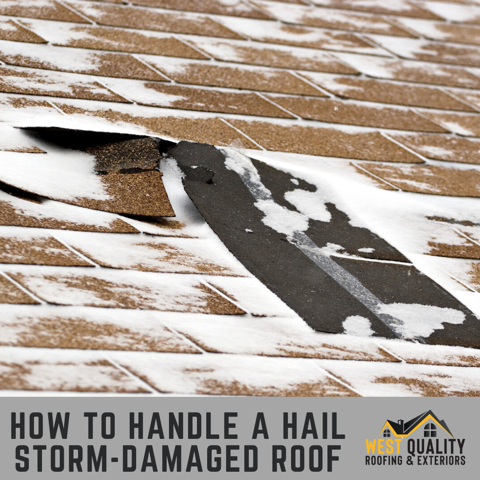Severe storms have become increasingly common across Alberta and Canada recently. Everywhere from Airdrie to Calgary, there has been a rise in storm warnings and powerful winds, which usually bring along dangerous hail. This destructive weather event can lead to severe damage to any structure in the storm’s path, with roofs being the easiest to hit.
We understand that a storm-damaged roof can be highly stressful, especially if there are more predicted storms on the way. Apart from making the building unsafe, the damaged roof can also be quite costly to fix. Since we’d recommend repairing it as quickly as possible, it’s crucial to figure out what exactly needs replacing.
Unfortunately, this can be easier said than done. The damage can vary depending on the roof material, as hail has different effects on different roof types. To help make the process as painless and possible, this article will discuss how to identify problems correctly and what to do with a hail damaged roof.
How Hail Storm Damage Can Compromise Your Roof
Hail can cause a whole range of damages to a roof, especially to the exposed shingles. Anything from the surface layer’s protective granules to the fibreglass underneath can be weakened and cracked. As hail comes in different sizes, it’s difficult to tell what damage has occurred without a close inspection. Roofs have many parts that could compromise the entire structure if damaged.
Identifying the specifics of hail damage is complicated and potential problems are easy to miss from the ground. For example, a shingle can become unsealed in a storm, but it might not have blown away. This kind of damage can lead to other shingles around it becoming loose without being noticed. Hail damage can lead to expensive repairs down the road if not acted upon quickly. Possible consequences include:
- Accelerated Shingle Granule Loss
- Premature Failure of Roof System
- Premature Failure of Siding
- Premature Failure of other Exterior Building Items
- Voiding of Manufacturer’s Warranties
How to Check Your Roof for Storm Damage
Various materials are affected differently by hail, which can make identifying damage even more complicated. Each material has its own inspection method, and knowing what to look for isn’t always obvious.
The first step is to check for any noticeable damage from the ground. We recommend that you use binoculars to see immediate problems easier. Next, try to remove any debris from the roof that the storm blew there. Loose objects could have damaged the roof in other ways on impact and can lead to further problems.
Once those issues have been identified, it’s time to call in the professionals. Damages like large holes and broken shingles need to be fixed correctly and safely, so you should get in touch with us for fast and efficient repairs. An inspection by a roofer can also let you know your roof type and what to look for in the future.
Signs of Hail Storm Damage On Your Roof
Thankfully, major hail storm damages can sometimes be easily recognized. Hail can make noticeable dents on cars, and broken shingles or tree limbs on the ground indicate substantial damage. If you see roof contractors in your neighbourhood after a storm, that should tell you repairs are needed to various roofs in the area.
Here are some common damages possible for different roof types:
- Asphalt-shingle roofs:
-
Cracked shingles
-
Exposed granules
-
Exposed/broken fibreglass mat
-
Loose seal
-
Missing shingles
-
Leaking roof
-
Torn shingles
-
- Wood shingles and wood shake roofs:
- Split wood
- Rotting/mouldy wood
- Holes in roof
- Water leaks
- Gray shingles
- Tile roofs:
-
Shattered tiles
-
Fractures
-
Impact marks
-
- Metal roofs:
-
Dents
-
Leaking roof
-
- Flat roofs:
-
Chipped/split panels
-
Rusted panels
-




